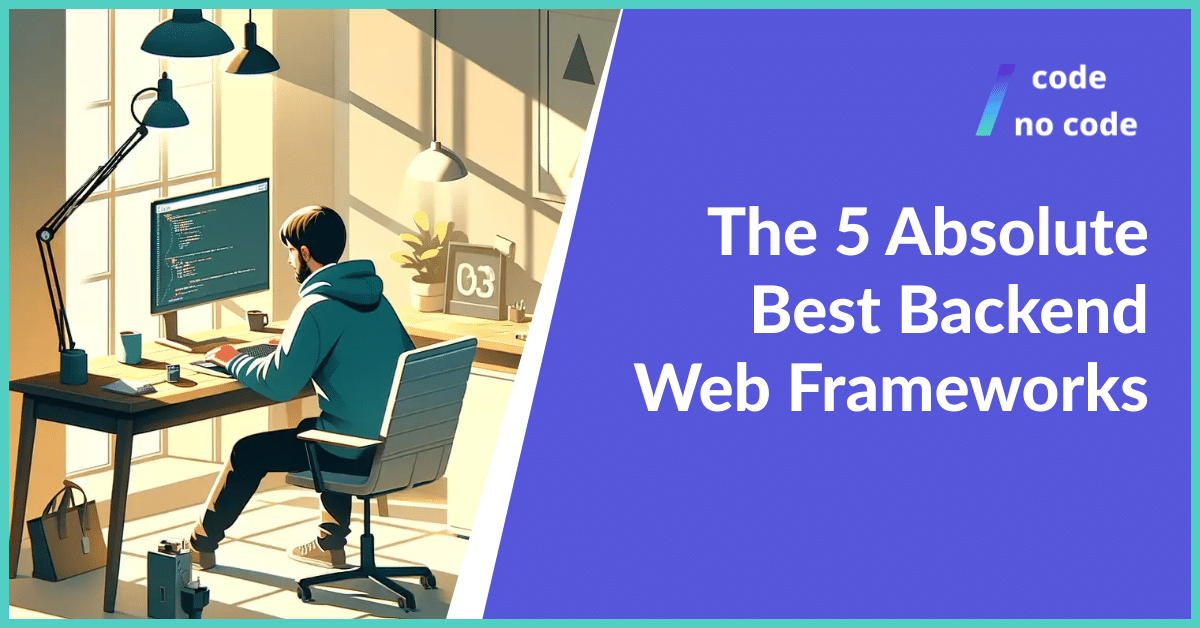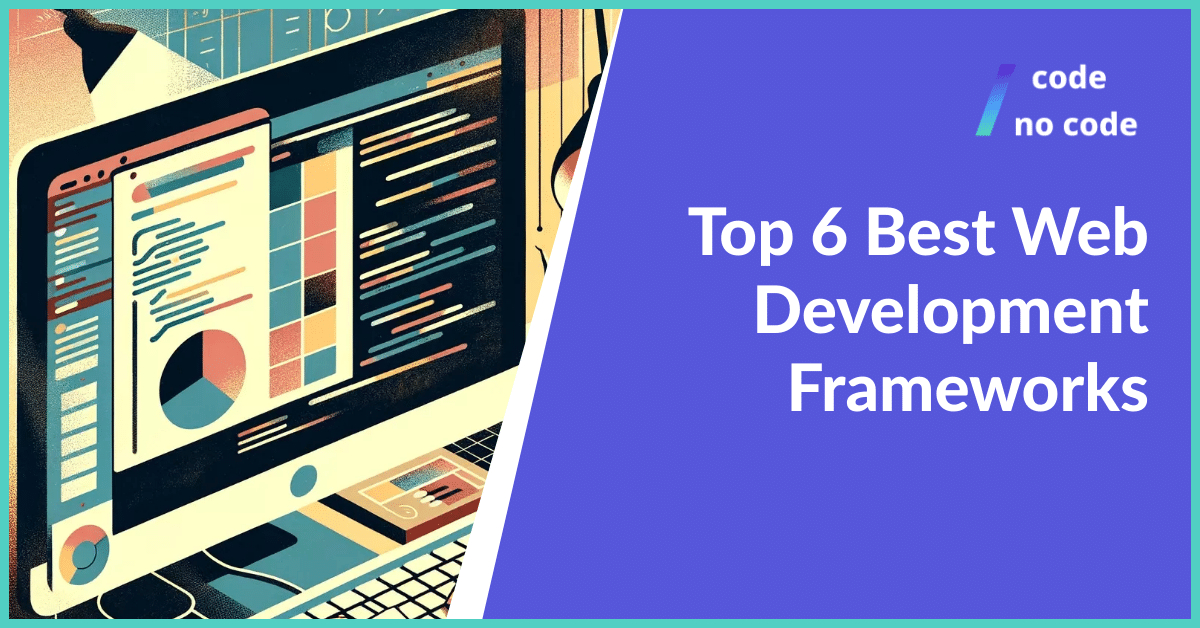
The 5 Absolute Best Backend Web Frameworks
Business web applications need to both be easy to build and maintain yet optimally functional. To that end, business owners continually have to use the best web...
Do you want to build dynamic web applications? Or are you more interested in developing mobile and desktop applications? Perhaps you are about to undertake some complex projects or mobile app development projects? Well then, knowing the ideal web framework to use is particularly crucial. Needless to say, there are a number of great web development frameworks available. But sieving for the best from the pack is not an easy task. Thankfully, this article contains a comprehensive list of the best web development frameworks. But to discuss that now would be jumping the gun. Some of us don’t even know what frameworks are and why we need them. You can read more in our article on what is a software development framework[1].

More importantly, we need to know the differences between frontend and backend web development frameworks.
A web framework is a code library with a range of software tools and resources. Web developers use them to support the development and deployment of interactive web applications.
Web frameworks function using pre-written code and web application templates. Other web resources are employable depending on the developer’s requirements.
Say you already have code to handle session data validation. Of course, this is a common functionality in web app development. It will be rather painstaking to rewrite such code each time you create a web service. Luckily, web frameworks will enable developers to bypass the need to rewrite such code.

Essentially, frameworks help enhance the speed and ease the web development process. But that’s not all; a good web development framework will aid in the following ways:
If developers only need to focus on a streamlined number of tasks, errors are more unlikely. With frameworks, professional developers may then work strictly on the design or business logic of web apps. In the background, the framework takes care of complex tasks like data binding.
While those features are present in most frameworks, some features are specific to the framework itself. Which leads us to discuss how to specify web frameworks based on their categories.
Have you also considered No Code tools as a part of your development stack? Read more about them in our article on What is No Code.
A framework may either be a frontend development, a client side framework, a backend or a server side framework. However, there are also full-stack frameworks. These bridge the gap between backend and frontend frameworks[2].
| Frontend Framework | Backend Framework |
| Deals strictly with user interfaces. It deals with the sections web users interact with | Works behind the scenes to ensure proper interaction between servers, databases, and the user interface |
| Incorporates SEO optimization, user interface with UX designs, and scalability tasks | Manages database management, user authentication, URL routing, site architecture designing tasks |
| Frontend framework development languages include JavaScript, JQuery, HTML, CSS, etc. | Backend development languages include: Python, Ruby, PHP, .NET and also, JavaScript |
| Frontend development frameworks include Bootstrap, Angular, React, Vue, Ember, etc. | Backend development frameworks include Ruby on Rails, ASP.NET Core, Express, Django, Spring, etc. |
We will now use both these categories to divide and discuss the top 6 best web development frameworks.

The first thing to note about this is that it’s ironically not a framework. It is actually a frontend library developed by Meta (formerly Facebook) in 2013. However, front-end developers consider it a top JavaScript framework. Perhaps because of its component-based architecture or JSX syntax.
React is mostly suited for creating single page applications and dynamic web applications.
Key Features:
Besides other positive prominent features, React does have some downsides to it. The most notable of is React’s speedy pace of development. That makes it difficult for developers to keep up, as they find themselves constantly having to learn new ways to get things done. Another issue is React’s overcomplicated documentation. This also stems from the fact that the technology gets updated so often that there is hardly any time for clear documentation.
This JavaScript framework is arguably the most popular web development framework around. It’s no wonder tech giants such as Microsoft and PayPal typically adopt it in their web projects.
Angular started off in 2009 as AngularJS, developed using JavaScript. Google then rewrote it in 2016 using Typescript, a syntactic superset of JavaScript. This makes it one of the best front end frameworks for enterprise web application development.
Key Features:
Angular’s major disadvantage has to be its steep learning curve. To use Angular well, you must have a good grasp of a range of controllers, libraries, and directives.

As the Ember homepage states, Ember is a framework for ambitious web developers. This must be true as a wide range of popular websites, and tech companies use and support Ember. These include; Apple Music, Netflix, LinkedIn, Twitch, Amazon, Google, and Meta.
The framework runs on a cross platform operating system. And it is an adept part of the JavaScript library, established on December 8, 2011. Since then, it has become one of the most popular frontend frameworks.
Key Features:
The notable drawback of Ember is that for a small web project, it is not an ideal framework. Beginners are likely to find the component structure of Ember counter-intuitive.

Image Credits: Nubelson Fernandes
Spring is an open source framework that supports MVC architecture. Rod Johnson developed Spring with Java in 2002. It is now one of the most used web frameworks for backend development.
Java is arguably the best programming language for backend web development. Hence, a tool that helps overcome limitations when developing web and mobile applications with Java becomes indispensable. This is what we get with the Spring framework.
Key Features:
The rather steep learning curve for Spring is its major pitfall.
Ruby on rails is one of the oldest and most popular backend frameworks around. Based on the Ruby programming language, Ruby on Rails has found use in well over 800,000 sites. Some of which include popular sites like; GitHub, Shopify, Hulu, Airbnb, to name a few.
Ruby on rails is mostly advantageous because of its large community. This makes it very beginner-friendly. Besides that, it provides all the requirements to build database-driven applications.
Key Features:
Yet again, the learning curve is the major issue here. But this time, the learning curve only steepens when you delve deep into the framework.

Python is currently the most in-demand programming language. This means that a python-based framework is sure to be just as sought after. And that is what we have in Django. As with Angular, it is one of the most popular web development frameworks around.
Django is an MTV-architecture-based[3] (Model-View-Template) backend framework. It leverages on programming paradigms and patterns such as DRY (Don’t repeat yourself) and CoC (Convention over Configuration). That ultimately enhances code reusability.
Key Features:
Two very notable frontend frameworks mentioned from the JavaScript library are Vue.js[1] and Backbone.js. Both are great for simple single page applications. But with Backbone.js, your development team is going to have to get familiar with using extensions and plugins.
As for backend frameworks, Express is great at creating REST APIs. Lavarel finds use in blogs, eCommerce apps, or other database-driven sites. Meteor is an especially great selection for cross platform applications.

There is a long list of popular backend and frontend frameworks[4]. But none of them can be considered as the “best mobile and web application development framework.”
For instance, as a Python developer, your best choice cannot be Lavarel – which runs on PHP. While both are among the best backend frameworks. And they both offer similar functionality. The facts are, you just don’t know PHP. So, for you, in this case, the best web framework would probably be Django.
In a nutshell, to know what web development framework is right for you, there are two things to ask. What do you want? And what do you know?
Be sure to look into No Code tools to optimise your software development process even more and make it up to 10 times faster.
Also, don’t forget to follow us on Twitter to get regular updates on the No Code industry.